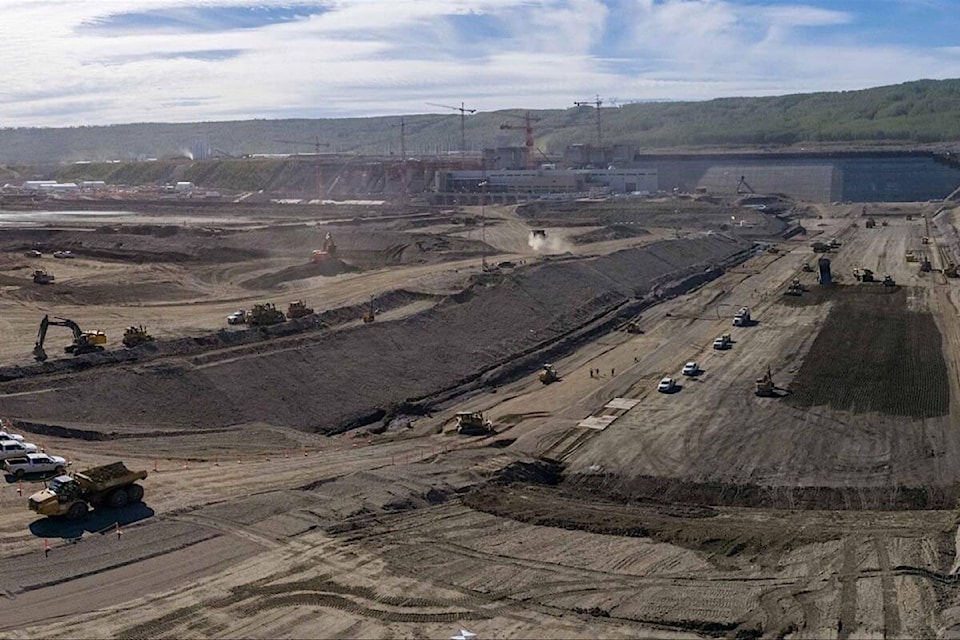As CanadaB��Ԫ������ַ�s largest-ever private investment moves toward export of liquefied natural gas from northern B.C., Premier John HorganB��Ԫ������ַ�s government is spending heavily to wean domestic users away from gas heat to electricity.
Horgan and Energy Minister Bruce Ralston are walking a fine line between the $40 billion LNG Canada development and their aggressive greenhouse gas emissions program, dubbed CleanBC. Surplus electricity coming on line from B.C.B��Ԫ������ַ�s last big hydroelectric dam is another card they have been forced to play.
With coal and gas-fired power production all but eliminated within B.C., the only remaining strategy is conversion of vehicles, industry and buildings away from carbon-based fuel use. And after bitterly opposing the Site C dam project on the Peace River while in opposition, since 2017 Horgan has watched its budget balloon from less than $10 billion to $16 billion for power that will soon need buyers.
B.C. Hydro has also extended the completion date, running up against geotechnical problems on the banks of the Peace River and coping with COVID-19 infections that have affected Site C as well as the Coastal GasLink and Trans Mountain pipeline projects and oil sands operations in northern Alberta.
Northern Health declared a COVID-19 outbreak at the massive Site C project in mid-August, and more than a month later there were 24 active cases being monitored. As of Sept. 22 there were 1,707 people at the camp near Fort St. John, with 33 in isolation at the camp and another 26 self-isolating at home. There are 232 people who have been cleared of infection of a total 255 confirmed cases at the project since the pandemic was declared in B.C. in March 2020.
RELATED:
RELATED:
Last week Horgan and Ralston unveiled another round of subsidies for moving to zero-emission vehicles and buildings, a $260 million program over five years. It mainly expands existing federal and provincial programs that provide rebates for battery and plug-in hybrid vehicles, increasing the fast-charging station network from 98 to 325 over the next five years.
B.C. Hydro, burdened by debt from Site C as well as overhauls of heritage dams at Maple Ridge, Campbell River and in the Kootenays, is taking on a large part of the latest program. Political pressure to keep hydro rates low has also led to billions in deferred debt, and that continues. The Crown utility began filing it latest to the B.C. Utilities Commission Aug. 31, proposing to reduce rates by 1.4% on April 1, 2022, followed by a 2% increase for 2023 and a 2.7% increase in 2024.
Ralston said the heat pump program adds another $3,000 on top of existing subsidies for eliminating oil and natural gas home heating. Another $60 million is for rate reductions for industry such as mining and forest operations to switch from carbon fuels to electricity.
B.C.B��Ԫ������ַ�s biggest emissions source is transportation, including ships and trains as well as cars and trucks. A further $50 million is offered as incentives for a B��Ԫ������ַ�clean industry and innovation rateB��Ԫ������ַ� for new businesses involved in synthetic fuels, carbon capture and storage, large data centres and particularly hydrogen fuel for heavy trucking and trains, Ralston said.
tfletcher@blackpress.ca
Like us on and follow us on .



